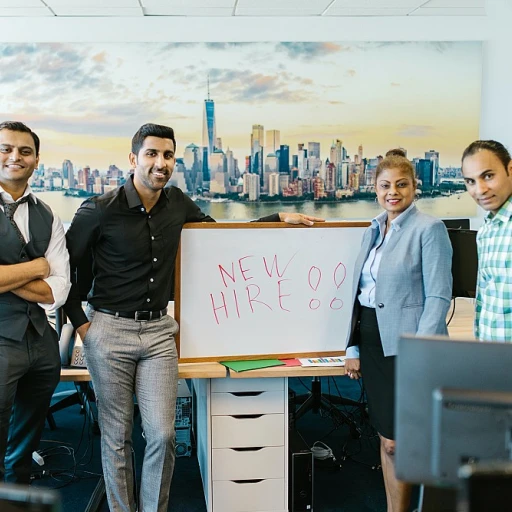-large-teaser.webp)
Understanding Adaptive Leadership
Grasping the Fundamentals of Adaptive Leadership
Adaptive leadership is often seen as a dynamic approach within the realm of organizational change, characterized by its focus on flexibility and resilience. At its core, adaptive leadership revolves around navigating complex challenges and empowering leaders to foster learning and growth within an organization. Understanding the fundamentals of this leadership model is essential for any team seeking to thrive amid change. In today's ever-evolving work environment, organizations face a multitude of challenges that are not simply addressed by traditional leadership methods. Instead, they require a more nuanced approach, where an adaptive leader must consider the emotional intelligence, decision-making capabilities, and resourcefulness of both themselves and their team members. This leadership framework is built on several core principles:- Empathy and Cultural Awareness: Adaptive leaders must be responsive to the needs and concerns of individuals and teams. This involves recognizing the unique culture within an organization and how it impacts the approach to change.
- Problem Solving and Flexibility: Tackling adaptive challenges requires leaders to shift from traditional problem-solving techniques and employ innovative solutions that consider the broader context of issues.
- Encouraging Reflection and Learning: Adaptive leaders cultivate an environment where learning is continuous, encouraging employees to grow from experiences and adapt to new challenges.
The Role of Adaptive Leadership in Change Management
The Influence of Adaptive Leadership on Change Management
Adaptive leadership plays a crucial role in maneuvering through the intricate landscape of change management. At its core, adaptive leadership is about navigating adaptive challenges that organizations face in dynamic environments. Adaptive challenges often require transformations in organizational culture, systems, and processes, unlike technical problems that can be resolved with existing organizational tools and procedures. Adaptive leaders are skilled in shifting perspectives and strategies, ensuring their teams are adequately equipped to meet the demands of change. Here's how adaptive leadership significantly impacts the change management process:- Encouraging a Learning Culture: Adaptive leadership fosters an environment where continuous learning is pivotal. Leaders must encourage their team members to embrace learning and be open to acquiring new skills. This mindset helps organizations stay agile and responsive to changes.
- Facilitating Dialogue and Collaboration: The role of adaptive leaders is to cultivate open communication and active collaboration within the organization. Allowing individuals to voice their concerns and ideas leads to more informed decision-making, enabling organizations to address complex challenges effectively.
- Empowering Individuals and Teams: Adaptive leaders provide the autonomy necessary for team members to take initiative, solving intricate problems that arise from organizational change. By empowering employees, they can act swiftly and purposefully, improving the organization's adaptability.
- Embracing Emotional Intelligence: It requires emotional intelligence to manage the nuanced dynamics during organizational change. Adaptive leadership involves understanding and managing emotions within the team, ensuring that stakeholders feel valued and engaged throughout the process.
Key Strategies for Applying Adaptive Leadership
Essential Techniques for Cultivating an Adaptive Approach
Adapting to the dynamic landscape of change management requires embracing a leadership framework that promotes flexibility, learning, and collaboration. Here are some pivotal strategies for applying adaptive leadership effectively within your organization:- Encourage a Growth Mindset: Foster an organizational culture where employees are encouraged to learn and grow. Adaptive leaders understand the value of nurturing a mindset that sees problems as opportunities for development. This approach is crucial when addressing adaptive challenges that cannot be solved by technical solutions alone.
- Foster Collaboration Among Team Members: Adaptive challenges often require input from diverse perspectives. Promote a team environment where individuals feel comfortable sharing their insights and ideas. This collaborative culture can lead to more innovative solutions and an increased sense of ownership among employees.
- Enhance Emotional Intelligence: Emotional intelligence is key for adaptive leaders to navigate complex challenges. By being attuned to the emotions and needs of individuals, leaders can make more informed decisions and manage the organizational change process with care and empathy.
- Encourage Participation from All Levels: Successful adaptive leadership involves the participation of employees at all levels. By creating an inclusive space where all voices are heard, leaders can harness collective intelligence and drive more effective change outcomes.
- Implement Effective Problem-Solving Techniques: Adaptive leaders are skilled at problem solving, particularly in complex situations. Utilize frameworks and tools that support decision making under uncertainty to better address the multifaceted challenges that arise during change initiatives.
- Leverage Technology and Tools: Incorporate relevant tools and technologies to enhance organizational effectiveness. For instance, exploring effective application portfolio management tools can support in managing resources and strategic alignment, ultimately aiding in adaptive change efforts.
Overcoming Challenges with Adaptive Leadership
Navigating the Execution of Adaptive Strategies
When implementing adaptive leadership within organizations, the journey is not without its hurdles. The application of these principles requires a shift in mindsets and openness to new approaches—a transformation not easily embraced by all individuals or teams. However, understanding and preemptively addressing these adaptive challenges can facilitate smoother transitions in cultures and operations. Firstly, one fundamental difficulty lies in integrating adaptive leadership into existing organizational frameworks. The traditional models often focus on immediate problem-solving, whereas adaptive leadership emphasizes long-term learning and adaptability. This shift can generate resistance from employees and leaders alike, accustomed to fixed structures and predictable decision-making processes. To counteract this, a focus on fostering a learning culture is pivotal. Encouraging an atmosphere where team members feel safe to express uncertainly and innovate can gradually transform organizational mindset from rigidly structured to nimble and responsive. Moreover, adept emotional intelligence on the part of leaders will be crucial, as they guide team members through the discomforts of change. Internal communication and consistent feedback mechanisms are also critical in managing uncertainty and disquiet among employees. Transparent communication builds trust, allaying fears that may arise when an organization embarks on complex challenges. By involving everyone in the discussions regarding the reasons behind change and the benefits of adaptive leadership, leaders can engender a collective ownership of the transformation journey. Lastly, adaptive leaders must remain vigilant to the evolving landscape within which their organizations operate. As the environment shifts, fresh problems and opportunities will arise. Adapting strategies and decision-making processes in real time, akin to 'being on the dance floor,' will enable organizations to pivot where necessary, maintaining momentum and relevance. Addressing these challenges head-on can lead to a more robust implementation of adaptive leadership, transforming potential roadblocks into stepping stones for achieving organizational change and growth.Case Studies of Adaptive Leadership in Action
Bringing Adaptive Leadership to Life through Real-World Examples
In exploring how adaptive leadership is applied within organizations, it is enlightening to consider tangible examples that underline the complexities and triumphs of this leadership model. Observing successes and learning from challenges can illustrate the actionable strategies covered in key strategies for applying adaptive leadership.
Take, for instance, the scenario of a healthcare organization facing adaptive challenges due to rapid advancements in medical technology. Adaptive leaders in this context need to integrate new systems while ensuring that all team members, from administrators to frontline workers, are aligned in their cohesive goals. This requires fostering a culture of continuous learning and a readiness to pivot strategies as needed to overcome obstacles.
In another example, an education-based nonprofit organization navigated the intricacies of transitioning to a remote work culture during a global pandemic. The organization leveraged the principles of adaptive leadership by engaging employees creatively to tackle communication and productivity challenges. This shift emphasized the importance of empathy and emotional intelligence in adaptive leadership, allowing leaders to connect effectively with individuals under stress and uncertainty.
Large corporate organizations have also demonstrated the impact of adaptive leadership by empowering employees to participate in decision-making processes. For example, a tech company addressing adaptive problems, such as data management and security, relied on the diverse perspectives of its team members. This facilitated a democratic leadership framework where innovative solutions emerged, demonstrating the strength of collective problem-solving.
Ultimately, by embedding these real-world strategies into daily practices, leaders can cultivate an environment that thrives amidst complex challenges. As these cases illustrate, adaptive leadership is not simply a theoretical model but a dynamic, lived approach to effectively guiding organizations through transformational changes.
Measuring the Impact of Adaptive Leadership
Evaluating Adaptive Progress
Measuring the impact of adaptive leadership in change management requires a multifaceted approach. Given the complex nature of organizational changes, simply relying on traditional metrics may not provide a complete picture. Instead, leaders must evaluate both tangible outcomes and the more nuanced shifts in organizational culture and individual growth.- Assessing Organizational Adaptability: One clear way to measure the success of adaptive leadership is by observing the organization's ability to manage adaptive challenges effectively. Leaders should examine how employees navigate complex problems and whether the organization can sustain these changes over time.
- Monitoring Employee Engagement and Growth: The effectiveness of adaptive leadership can also be gauged by evaluating changes in employee engagement and professional development. Increased involvement in decision making and problem solving are indicators that adaptive leadership is being embraced. Additionally, tracking individual learning and skill acquisition over months can highlight progress in embedding adaptive principles.
- Evaluating Cultural Shifts: A successful adaptive leader fosters a culture that encourages continuous learning and emotional intelligence. As such, assessing changes in team dynamics and overall organizational culture is crucial. This involves paying attention to how team members collaborate and support one another, especially in the face of challenges.
- Feedback and Continuous Improvement: Soliciting feedback from various organizational levels can provide insight into the leadership framework's effectiveness. Understanding how adaptive leadership principles are perceived by employees can help identify areas for improvement. This continuous feedback loop also ensures the organization remains aligned with its adaptive goals.













